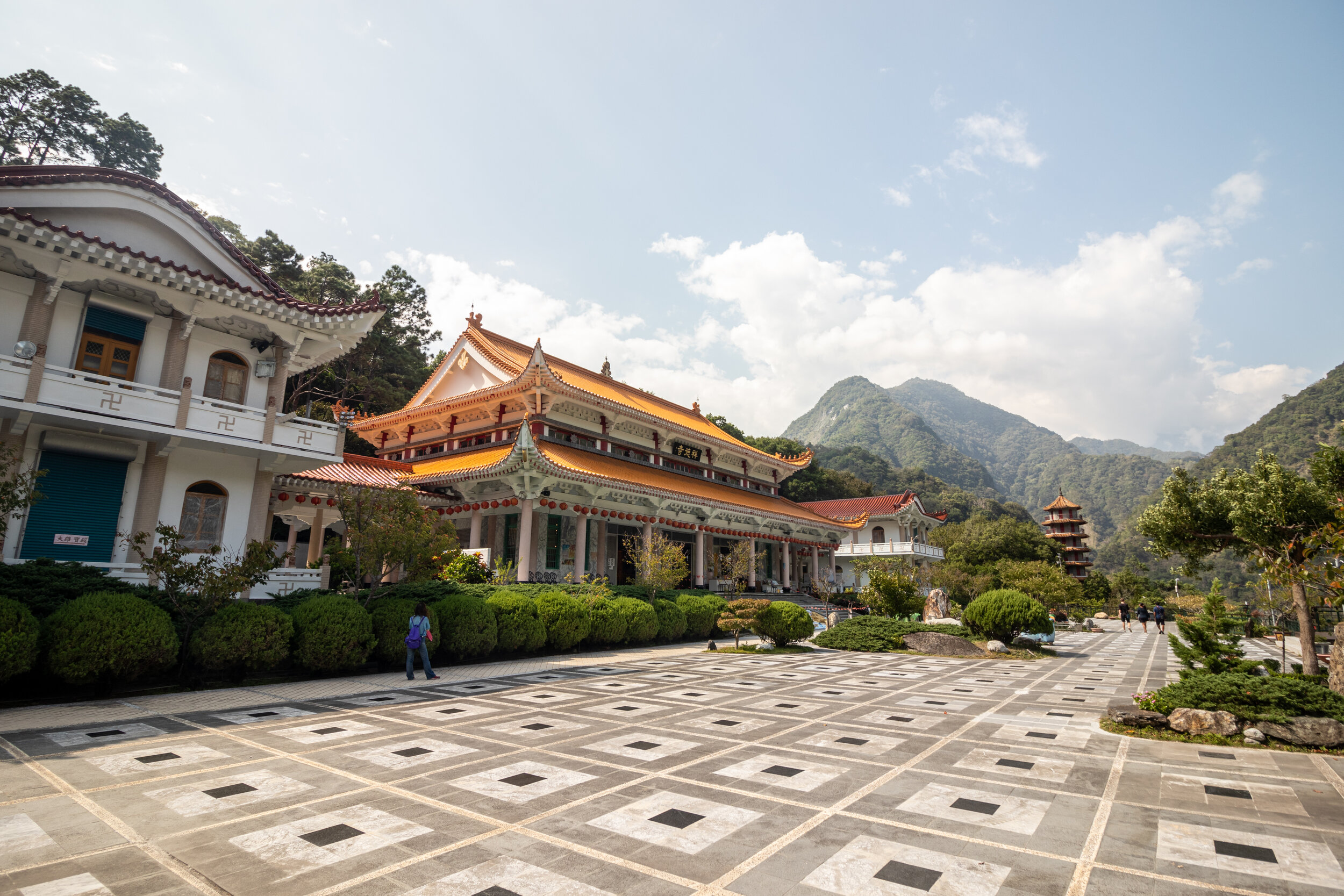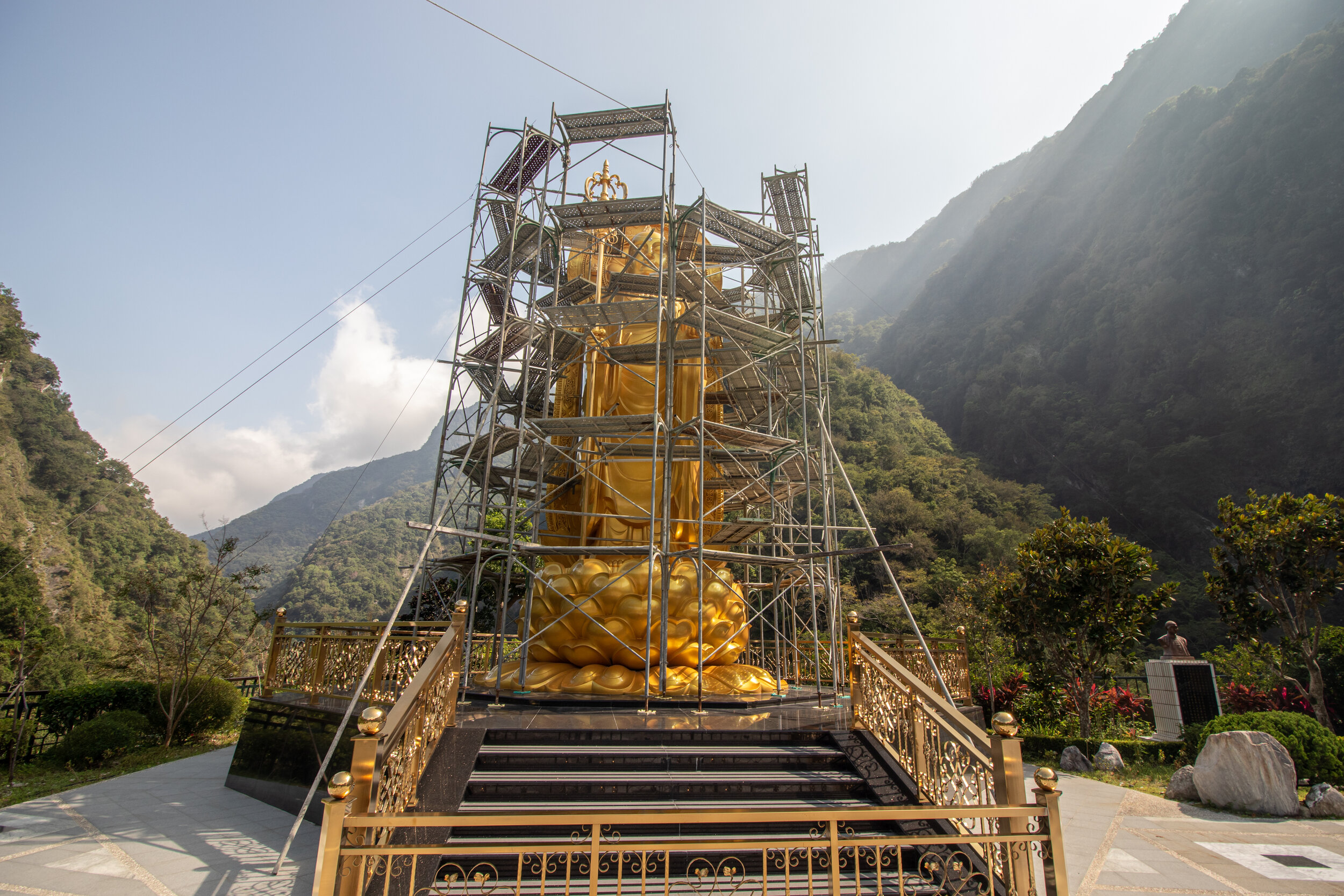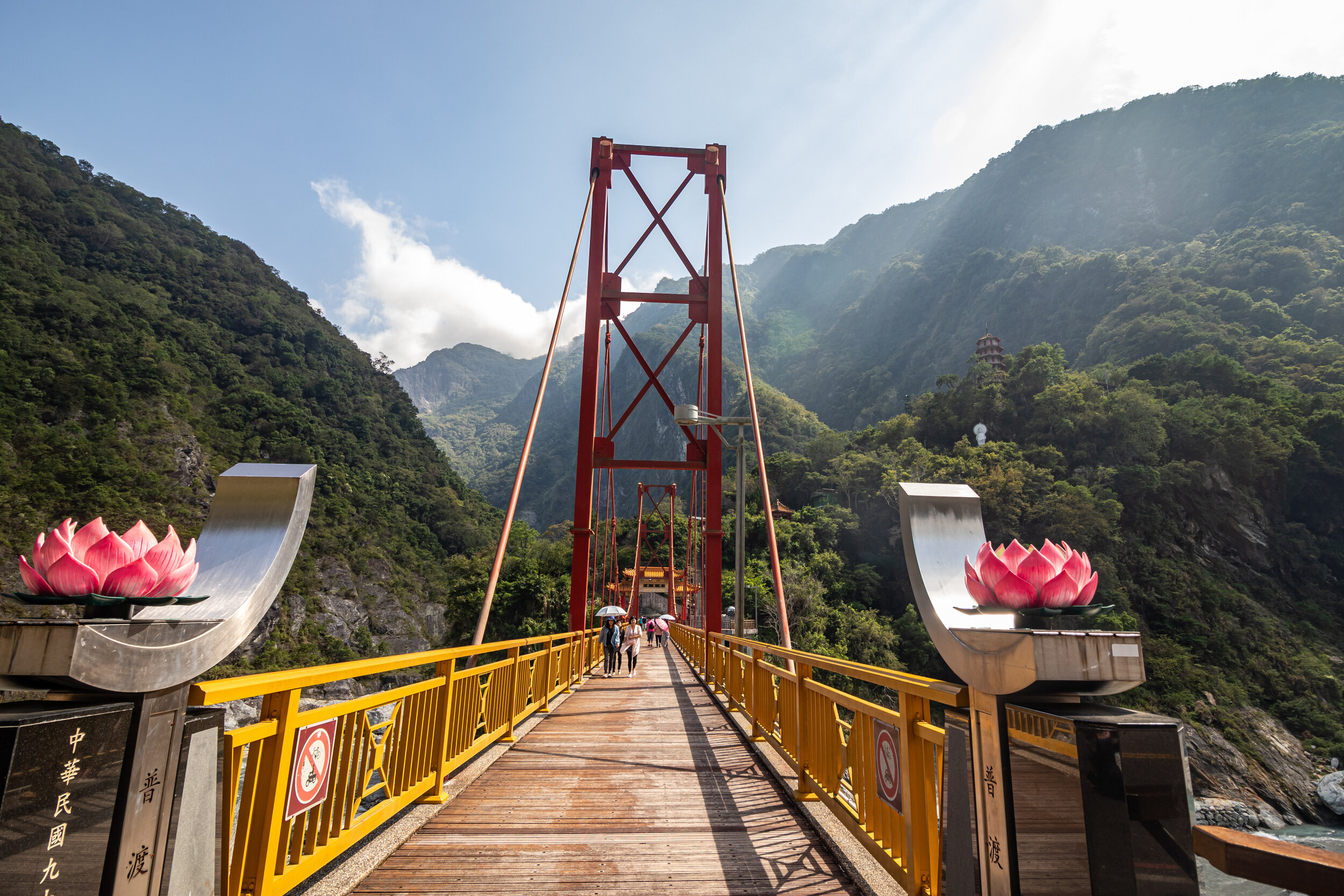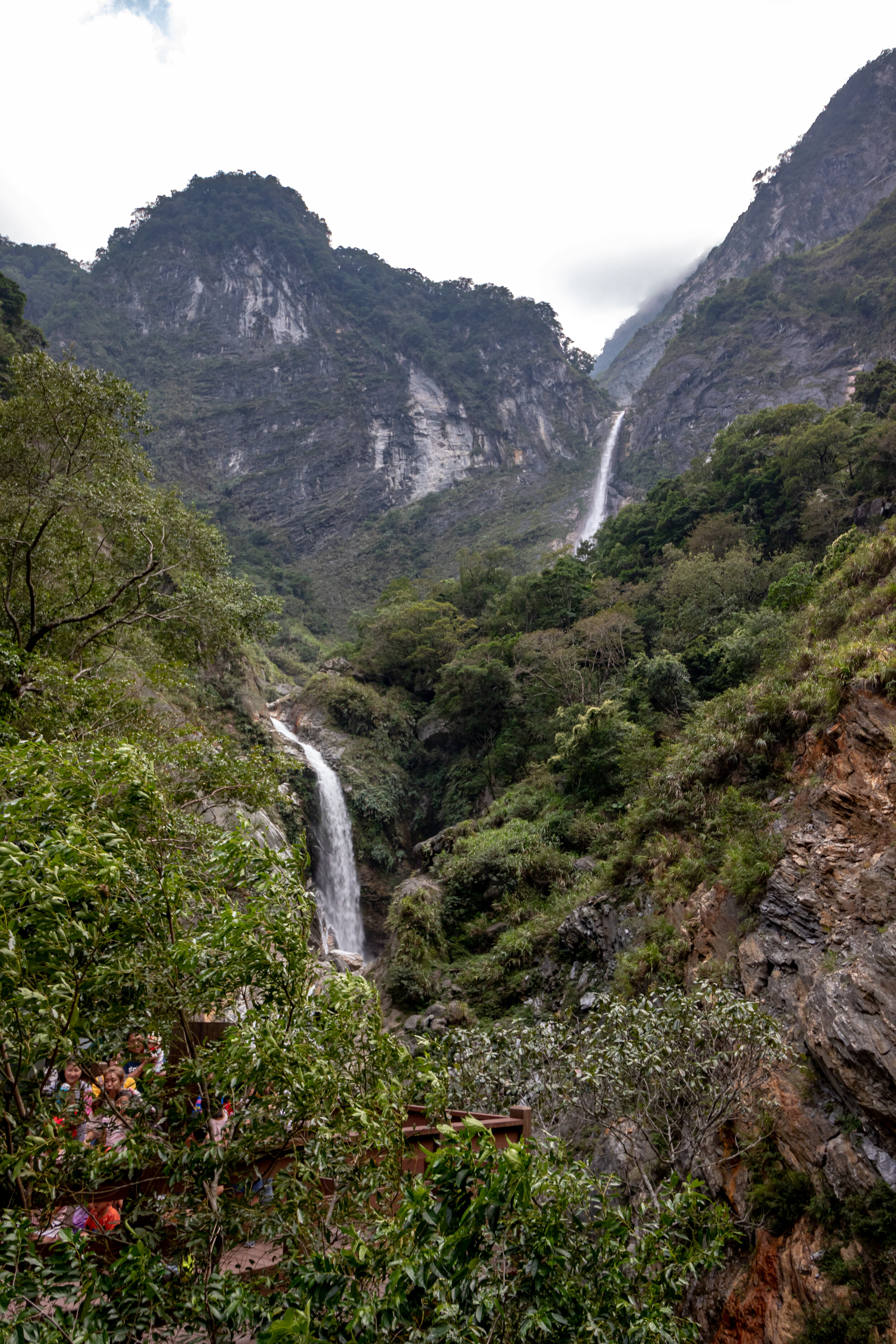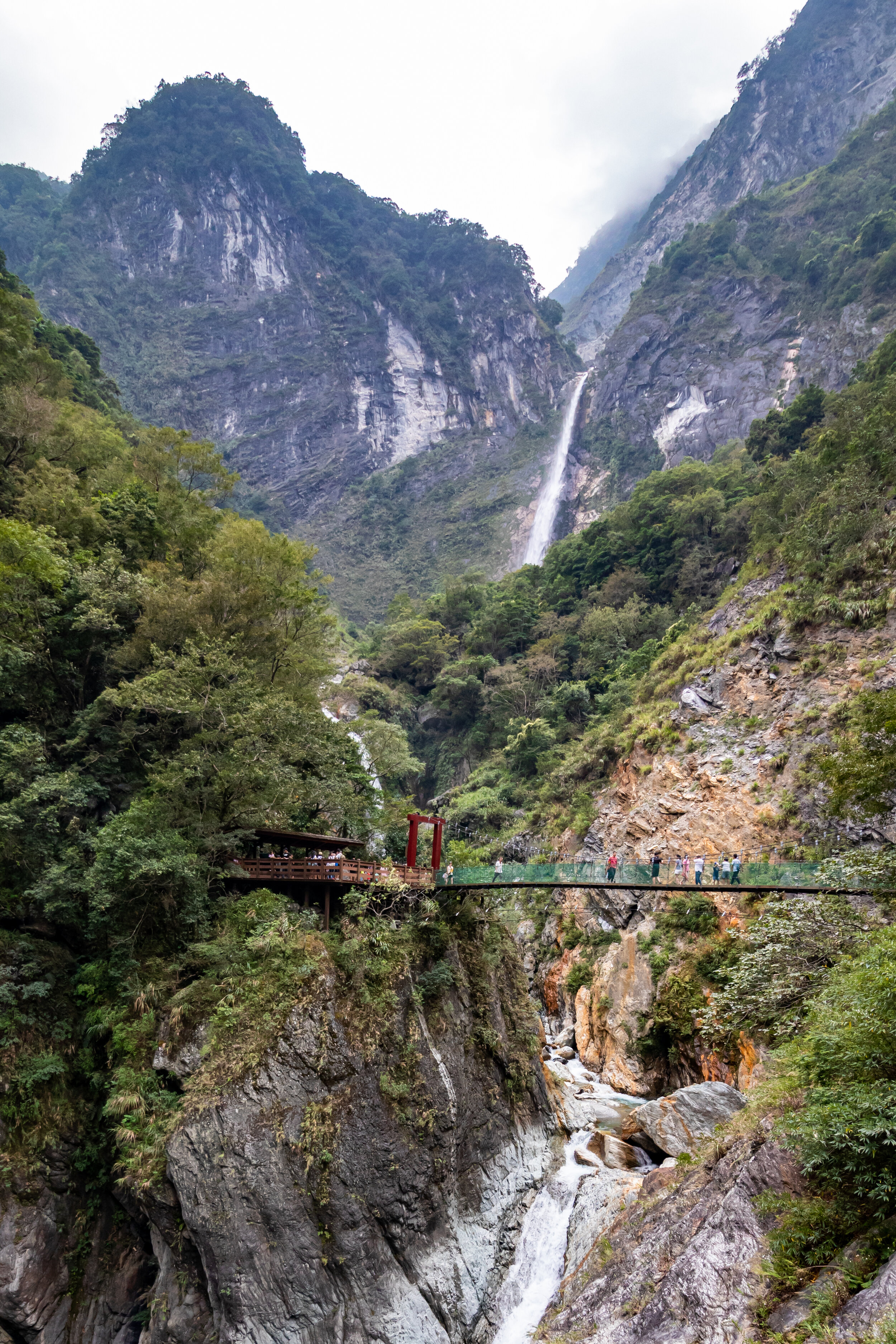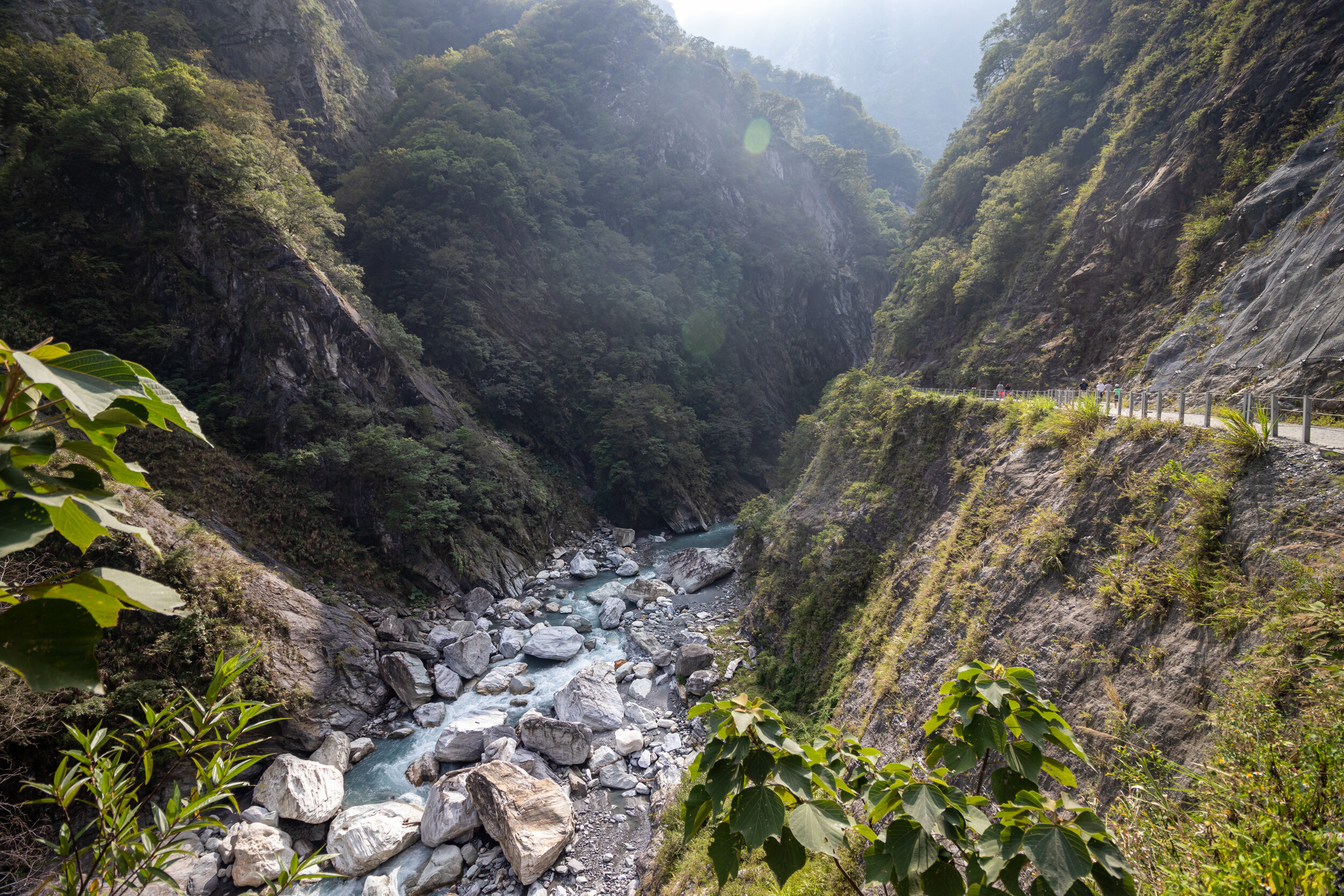Taroko National Park is one of Taiwan’s most famous attraction for good reason. Named Taiwan’s Grand Canyon, this spectacular region in the central-east of Taiwan is a national treasure.
Taroko Gorge was carved by the Liwu River and the park is so big, it is part of three different counties: Taichung County, Nantou County and Hualien County. Covering 1200 square km and having peaks rising to 3000m above sea level, this place is pretty impressive and a must-see place to visit.
This is the perfect spot to visit for travelers as it has magnificent views of mountains, temples, waterfalls and great hikes.
Table of contents
Map
History
Originally established as the Tsugitaka-Taroko National Park (Tsugitaka Taroko kokuritsu kōen) by the Japanese when Taiwan was part of the Japanese Empire in 1937. When Japan was defeated during WW2, the ROC took control of Taiwan and abolished the park in 1945. The park was reestablished later on November 1986.
Inhabited by the Truku aboriginal tribe in the 18th Century by the Liwu River, the name Taroko means:
A living terrace which was surrounded by three valleys.
Places to visit
Taroko National Park Visitor Center
You should stop there to get more information on the region. The information desk was quite useful to me to plan my day in the Gorge. This is the place you can get an English map of the region and recommendations on hikes and places to visit.
Changchun Bridge
This impressive bridge leads to the Shrine made in honor of the construction workers who completed the road through Taroko National Park.
This bridge was decommissioned for safety reasons in 2013. They rebuilt it, copying the old design in 2014.
Eternal Spring Changchun Shrine (太魯閣長春祠)
Eternal Spring Shrine was built to commemorate all the workers who built the Central Cross-Island Highway through Taroko National Park. More than 5000 workers daily were required to contruct the 192 Km road that goes through the mountains. This labor-intensive process took 3 years and 9 months and 226 died in work related incident.
This amazing temple rests upon the everlasting flow of the Liwu River. Because this constant flow never stops, this shrine has taken the name of Eternal Spring Shrine. Constucted in 1957 and destroyed two times because of landslides, it was rebuilt last in 1989.
There is a 2km hike that takes about an hour to complete called the Changchun Trail (長春祠步道). This is by far my favorite place in Taroko Gorge.
Cimu Bridge and the Frog Prince
Guarded by two marble Chinese lions, this bridge was rebuild in steel in 1995 after a typhoon damaged the old one.
This is where the Laoxi River merge with the Liwu river. The name Cimu means motherly devotion and comes from a tragic story: A mother’s child was swept away and day after day, the mother would visit wishing for her child’s safe return.
From the right distance, the rock looks like a prince wearing a crown (pavilion). The pavilion was constructed in memory of Chiang Kai-Shek’s mother.
Swallow Grotto (Yanzikou Trail)
This is one of Taroko’s most famous spots. As you walk into a cave, you can admire the tall walls of the canyon as the Liwu River rushes through below.
The name Swallow Grotto comes from the many swallows that live in the cavities of the cliff made from erosion over thousand of years of the water rushing through the tall walls. The holes high on the cliff show that the Liwu river flowed there long ago.
You can admire the dance of flight of these cute Swallow who live along these pot holes.
This 1.37 Km trail brings you to a viewpoint of the two impressive suspension bridges. Do not forget to wear a helmet as falling rocks are common due to the tall walls. You can rent the helmets for free along the way on route 8.
Too bad I didn’t have time to walk on these suspension bridge high above the river. I’ll have a good reason to come next time!
Tianxiang Recreation Area
This region is where you can find a gas station, a few restaurants, a visitor center, a church and places to stay. It is seen as the unofficial ending point of the tourists as the roads and trails increase in difficulty.
I’ve heard that often times, monkeys hangout at the gas station, waiting for tourists to buy food so they can leap on them and steal their food. You’ve got to watch out for the monkey bites, the needle for the shot is pretty scary.
If you cross the Pudu Bridge, you will arrive at Xiangde Temple. Photographers will have a good time with the beauty of the scenery of that region. From there you can admire the tall statue of a White Robed Guanyin Statue, the 7-story high Tianfeng Pagoda, Giant statue of the Bodhisattva and Xiandge Temple.
Tianxiang was named to honor Wen Tianxiang (文天祥), a Song Dynasty hero who resisted Kublai Khan. Imprisonned for refusing to convince his people to surrender, he was executed 4 years after and the Mongolians overcame the Song Dynasty to establish the Yuan Dynasty.
Baiyang Trail
This 4.2 Km trail takes from 2 to 3 hours to complete but is worth every minute. Along the way, you will admire diverse flaura and fauna, valleys, cliffs, waterfalls, rivers and 8 caves. Everything you need for a good time!
The name Baiyang comes from the Truku name for the village that used to be there.
Better prepared a flashlight because many caves will be pitch black and can be a bit spooky. You might even get the chance to see a family of bats resting.
You will soon arrive at Baiyang Waterfall: an impressive 2 section waterfall dropping from 200 m. There are bridges that bring you closer to admire the view of the waterfalls and the river crashing down below.
This whole region was built by Taiwan Power Company in 1984 to develop hydroelectric power in the area. The project was eventually cancelled (source). The road of the trail is well maintained and even accessible to wheelchairs.
A bit further on the trail, you will arrive at the Water Curtain Cave (中文版:水簾洞) where you can get a poncho to venture in a cave where you can go through a waterfall. Beware of the slippery rocks and bring a flashlight if you can because the trail can be quite slippery. There is a security guard at the entrance so feel safe to leave your valuables there.
Qingshui Cliff
Hard to miss this amazing scenery of the mountains meeting the ocean while you drive the coastline. This amazing view is one to stop by to admire. This is the result of Chongde, Qinshui and Heping mountains meeting the ocean.
Designated as one of Taiwan’s Eight Wonders in 1953, this site features an impressive cliff of more than 800 m that drops straight down in the sea. This section of the cliff is made of gneiss and marble.
The coastal highway stretches more than 20 Km and is an amazing place to drive. So high up, you almost feel like you are flying over the ocean.
Other recommendations
Lushui Trail
This 2 Km trail takes about an hour to complete and goes deep in the jungle. This trail features different fauna and flora species, as well as cliff views and traces of Japanese occupation. There is a short tunnel and a suspention bridge. If you are lucky, you might even see Formosan macaque monkeys along the way.
It is a great place for birdwatching, as many rare species can be found on the way such as the Taiwan Bulbul, Grey Treepie, Muller’s Barbet, Black Bulbul, Japanese White-eye, Taiwan Whistling Thrush and many more.
Shakadang Trail
Originally known as Mysterious Valley Trail, this 4.4 Km trail is an easy but beautiful hike that takes around 3-4 hours to complete. This well maintained trail follows the crystal clear Shakadang River. Classified as a scenic trail, it is a great hike to do with your family.
250 years ago, the Truku settled in the river valley. They exhumed many large rocks ressembling giant teeth. Shakadang means tooth in the Truku aboriginal language, thus the name of the region. The trail was carved by the Japanese in the 20th Century.
Along this trail, you will see fauna and flora, unique rock formations, pass through a Truku tribal village and gain access to dip in the refreshing Shakadang River. The landmarks on the trail are the Large Observation Platform, 5D Cabin, River Dam and 3D Cabin.
Click here for more information.
Xiaozhuilu Trail
This 650 meter trail starts from the Visitor Center and connects to the Shakadang Trail. There is a boardwalk that offers stunning views of the Liwu River. Here are the highlights of the trail: Xiazhuilu Cliff, a little suspension bridge, a viewing platform and the entrance to Shakadang Trail.
Click here for more information.
Zhuilu Old Trail
This trail built in 1914 served as an important connection between Truku villages a long time ago. In order to complete that road, the aboriginals needed to use climb up the cliff and rappel down while shaping the cliff dynamite. 37 people died during the process.
It is characterized by a trail with magnificent scenery that follows the path at the side of the Zuili Cliffs.
This trail stops a lot of visitors because of the permit you need to get 35 days before and wait for approuval. For this trail, you will need to buy a park permit that will cost you NT$200. Plan 3 to 5h to complete the trail.
This trail is quite steep so be in good physical shape and don’t walk too close to the ledge.
Click here for more information.
Tunnel of Nine Turns
This sinuous curve of the road features many caves that show the Liwu lake below. It can be hard to get there because there are no places to park, so easier to get there by scooter.
Buluowan
Situated just before the Swallow Grotto, this stop features a visitor center where you can learn more about the local tribes and about the culture of the Truku and the Shisanhang.
There are many shops that sell handcrafted products at the lower terrace and a few aboriginal exhibitions.
In the Upper Terrace, you can find the Bamboo Groves Trail, the Bamboo Forest, Mountain Moon Village and beautiful flowers.
Click here for more information.
Transportation
By train:
It is possible to get to Hualien from Taipei by train. The trip is about 2-3h and is around 440NT$, then book a car or take a taxi from there. For more detailed information click here.
By car:
It is possible to rent a car by the train station if you have your international license. Keep in mind that at sunset, the traffic is terrible during the weekends. Click here for a detailled map of the different roads and a list of places to rent a car.
By bus:
Some tour buses offer to drive to Taroko. Tour buses are great because you don’t need to drive and can relax and enjoy the view. However, it takes longer so you will be limited by time constraints.
By scooter:
This option is great is you want complete freedom. You can rent a scooter nearby the train station if you have an international license. It is a great way to visit at your own pace and skip cars stuck in traffic. The only donwside is that it takes a lot of energy and can be exhausting if you don’t plan properly.
The curvy steep roads of Taroko can be quite dangerous if it rains as well and is not recommended for your own safety. However, on a clear sunny day, this option is awesome.
Tour guide:
Booking a tour is probably the best option for any travelers. The tour guides are used to the region and have lots of driving experience. On top of that, they will adapt to your needs and offer lunch.
Places to stay
Silks Place Taroko Hotel:
This 5 stars hotel will cost you around NT10 000$ for the night. It offers a tennis court, indoor and outdoor pool, a spa and dining. For luxury lovers, this is the choice for you.
Taroko Village Hotel:
This 3 star hotel offers rustic rooms in a tranquil hotel with a restaurant and mountain views. The rooms will cost you around 10 000$ NT per night.
Taroko Liwu Hostel:
Great option for budget travelers, the shared rooms are pretty cheap.
Tianxiang Youth Activity Center:
The room will cost you aroun 2500 to 3000$ NT per night but is at the center of Taroko Gorge and you will wake up with an amazing view.
Taroko Tianxiang Presbyterian Protestant Church and Hostel:
At the heart of Taroko, these shared rooms will cost around 400$ NT per night. A great option for budget travelers.
Go camping
There are 3 camping spots: Heliu Campground, Lushui Campground and Baiyang Trailhead Carpark.
Click here for more information about camping in Taroko.
Book a hostel in Hualien
These shared rooms will cost around 700$ NT per night which is another great option for budget travelers.











